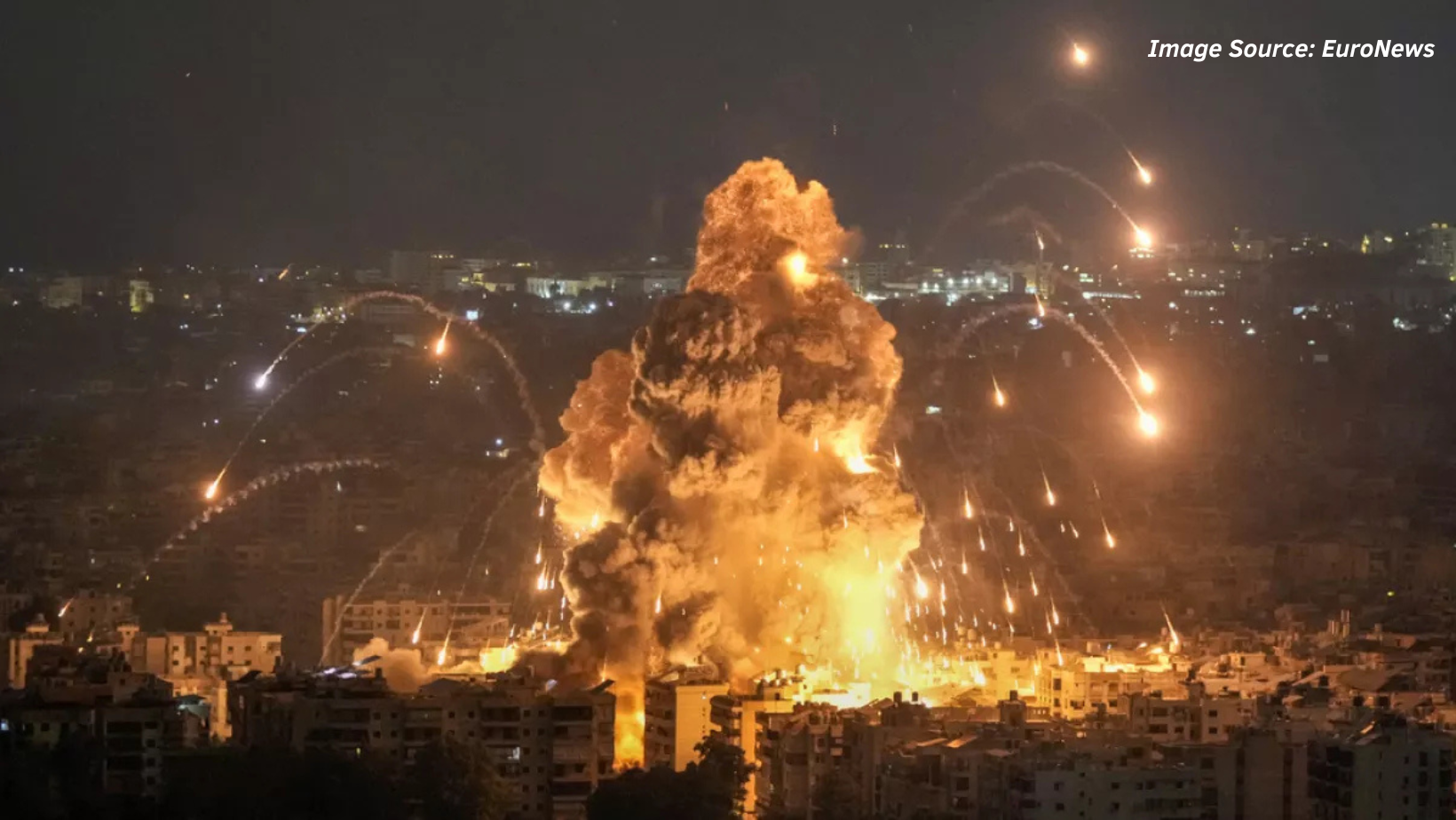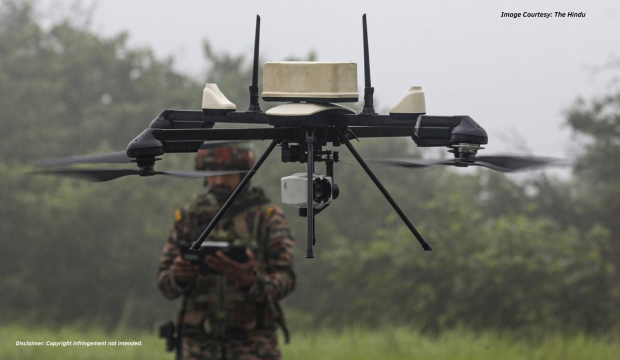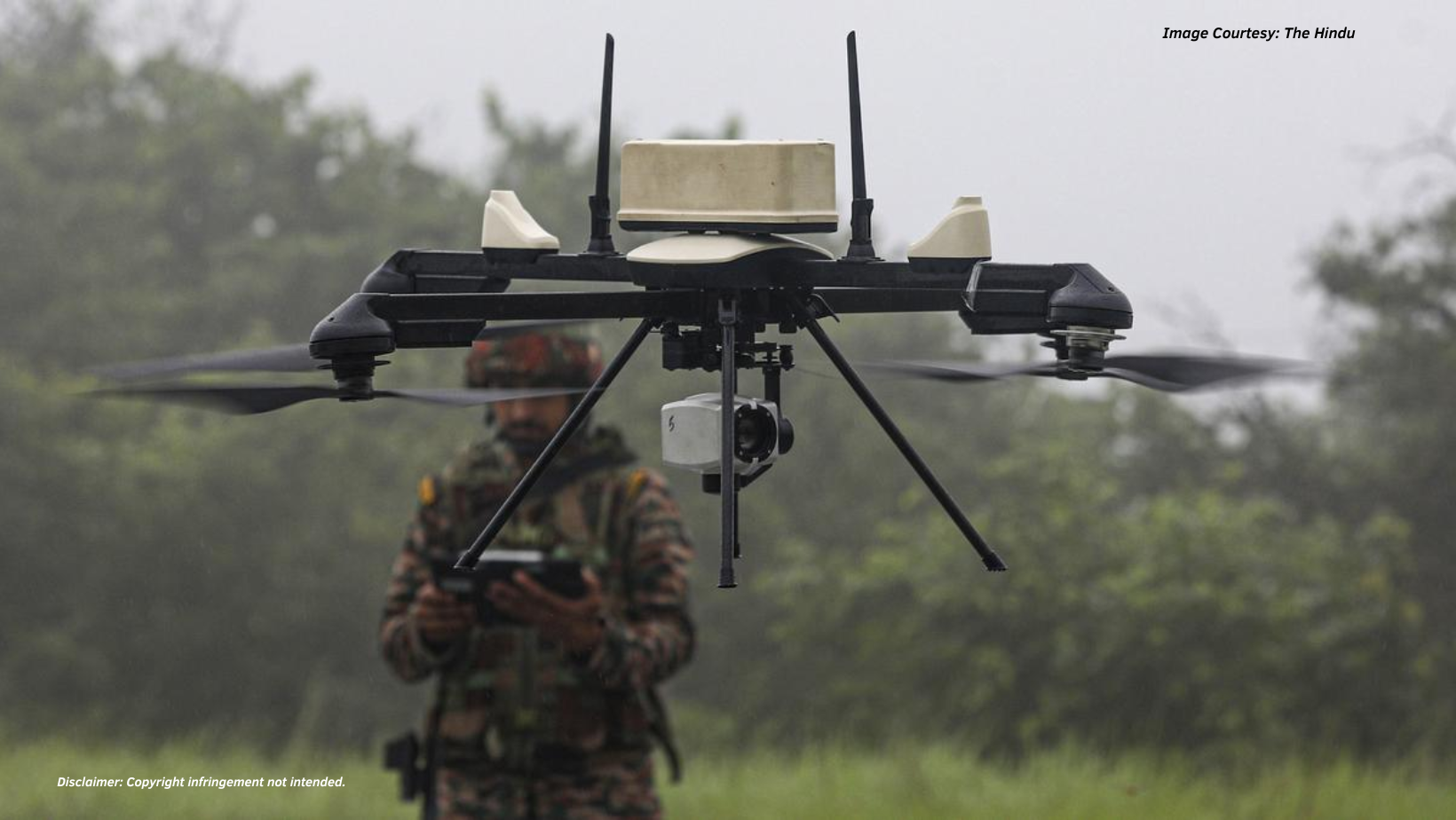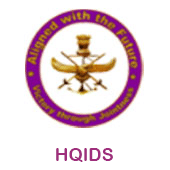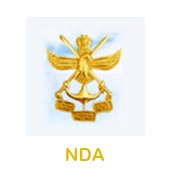It is now history that in the wee hours of the night 25-26 Oct 2024 some 100+ front-line fighter aircrafts comprising of F35 Lightening II (Adir) stealth air superiority fighters, F 15I R’aam ground attack aircrafts and F16I Soufa multirole fighters struck some 20 Iranian military targets. Most conspicuously, Israel claimed that it had struck a severe blow to Iranian air defence systems including some long range anti-missile systems.[i]
By all counts, it is known that Iran has a very formidable air defence capability, especially the Ground Based Air defence (GBAD). How come its shield of air defences proved to be so toothless, worse, it took casualties on itself leave aside failing to preserve the assets being protected. This work attempts to find an answer to this poser. Views are personal.
Triple Verticals of the Air Defence Capability
Typically, the air defence capability is measured along three verticals, popularly called the ‘Sensors’, ‘Shooters’ and ‘Battle Management and Command and Control (BMC2)’ systems.
Fundamentally, sensors detect the incoming threat at longest possible ranges, shooters represent the fire arm extending from the terminal end out to hundreds of kilometres and BMC2 which in air defence parlance is called the Air Defence Control and Reporting System or ADCRS is the lifeline that knits the sensors and shooters into an effective operational loop and executes the air defence battle, end-to-end.
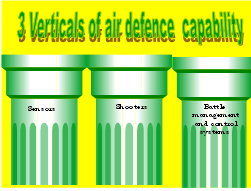
Fusing the inputs of multiple sensors looking out to detect the incoming threat so to avoid duplication, recognising ‘friend’ from ‘foe’ in the Air Situation Picture (ASP) generated by multiple sensors thus producing the recognised ASP or RASP, prioritising the threat based on the twin criteria of lethality and immediacy, real time designation of targets to the weapon system(s) most suitably placed to engage the threat and seamlessly shifting fire from weapon-to-weapon across the fire-arm till the threat is destroyed are some of the critical battle functions of ADCRS, not to mention the allied battle function of Air Space Control ( ASC) – the complex task of ensuring the optimal use of the finite air space by multiple users with minimum restrictions and maximum degree of freedom. It is for no mean reason therefore, that ADCRS is recognised as the life-line of the air defence battle.
Iran’s GBAD muscle – A Brief Assessment
The Islamic Republic of Iranian Air Defence Force is the air defence component of the Islamic Republic of Iran Army. An attempt has been made to measure its capability under the three verticals of capability described above:- , ,
Sensors
Iranian sensors like all others can be classified as early warning radars (EWRs) capable of long distance warning of air threats, the Tactical Control Radars (TCRs) capable of dual function of early warning, as well as, auto designation of threat to shooters via the ADCRS regime and the sensors associated with guns and missiles which are essentially fire control sensors, not necessarily contributing towards the EWR/TCR capability.
While the Military Balance 2024 and other open source data lists a large number of radars in Iranian arsenal, some salient equipment capable of long range early warning is briefly captured:-
- Sepehr Over the Horizon (OTH) radar. Its planned EW operational range was 3000 km, what is reported to been achieved is much lesser (300-700 km). OTH radars are meant to have very long ranges of thousands of km.
- Ghadir is phased array radar that has a detection range of 1100 km up to an altitude of 300 km. This radar has a capability to detect conventional air threat vehicles such as stealth aircrafts, ballistic and cruise missiles etc. Assessed holding is 7 as of 2023. This is a derivative of Russian Rezonans NE radars capable of detecting stealth threat.
- Ghamar is a three dimensional (3D) radar with a surveillance range of 450 km and a capability to simultaneously track more than 100 targets. It has a strong capability to survive enemy’s electronic warfare attacks.
- Matla-ur-Fajr is a 3D radar that operates in the VHF range which implies that the radar will be optimised for detection of small targets (targets having low radar cross-section or RCS) like drones and unmanned combat aerial vehicles (UCAVs) etc. Its operational range is 300 km
- Alim EW radar is also optimised for detection of small RCS threat. It has a range of 300 km. Being passive array (does not transmit), it is immune to enemy’s anti-radiation missiles (ARMs).
- Falaq is another long range surveillance radar (LRSR) similar to the Russian LRSR made for S 300 air defence and anti-missile system . Range 300-350 km.
- Some other EW radars of lower ranges include – Asr ( 200 km) , Arash ( still under development), Kashef ( 150 km).
Shooters (Interceptors)
Shooters constitute the fire-arm which is capable of inflicting a seamless punishment from the farthest effective ranges right up to the terminal end of the assets being protected. Here are the salient details of the Iranian GBAD fire arm
Very Short Range Air Defence Systems (VSHORADs)
Weapons in the range bracket of 8-10 km that form the last line of defence in the fire arm are called VSHORADs. These normally include towed/self-propelled (SP) gun or gun-missile systems. Iran has a full spectrum of VHORADs. These include towed guns- Russian ZU 23-2 twin barrel (range 2.5 km) and Iranian Mesbah 1 ( range 2.5 km). SP weapons mounted on track chassis include the 4-barrelled Schilka (capable of firing 3400 rounds/min to a range of 2.5-4 km) and ZSU 57 with 2 xL-60 guns on track chassis. There are also some vintage heavy anti-aircraft guns of 100mm calibre. While all the above guns are of Russian/indigenous origin, there are also Oerlikon 35 mm twin cannon of swiss origin ( range 4 km).There are some VSHORAD missile arsenal as well such as the Rapier missile system ( range 8.2 km).
MANPADS
Though very much a part of VSHORADs, MANPADs or man portable SAMs are mentioned separately for their prime importance in the tactical battle area against such threats as attack helicopters ( AHs) , UCAVs and tactical missiles. These typically operate within ranges of 3-7/8 km.
Iranian MANPAD inventory is largely indigenous ( Misagh I and II – range 5 km, Qaem laser beam riding MANPAD – range 6 km) though it has two other MANPADS; the famous Swedish RBS 70 the laser beam-riding MANPAD with a range up to 8 km and the old vintage Chinese HN 5 ( range 4.4 km) .
The missile force
The real teeth of the Iran’s GBAD lie in the missile force. Typically this punch is classified as short range SAMs (SRSAMs-range up to 30 km) Medium Range SAMs (MRSAMs- range up to 100 km) and Long Range SAMs (LRSAMs- range > 100 km) signifying there place in the fire arm.
Iranian GBAD force features weapons in all the three verticals:-
SRSAMs
- The SRSAMs include the latest vintage (Feb 2024) Azarakhsh system with a range of 25 km, Herz 9 SRSAM (range 8-12 km), Ya Zahra/HQ7 air defence system (range- 8-15 km). In addition there are old vintage Russian VSHORADs range SRSAMs like Strela 10 (range 5 km), Osa AK range 10 km).
MRSAMs
- The MRSAMs include the old vintage Hawk MRSAM of US origin (range 50 km), Russian MRSAM Kub 12 (range 25 km), track mounted ToR MRSAM of similar range and reach, Sayyad SAM that spans the range from MRSAM well into the LRSAM regime ( 40-300km), Mersad MRSAM (range 45 km) , HQ2J ( range 45 km), Salamche SAMs (range 40km), Tabas MRSAM system ( range 75km), old vintage SA 2 SAM ( range 45km)
LRSAMs
- The LRSAMs include the latest vintage ( Feb 2024) supersonic Anti Ballistic Missile Arman ( range 160-180 km) , Shahin supersonic SAM (range 70-150km), Raad air defence system ( range 105 km) , Khordad series of LRSAMs (2019 vintage systems covering a range from 150-200km
Long Range Air Defence and Anti-Missile Systems
In the context of long range air defence and anti-missile systems, mention is made of two systems, Bavar 373 and S 300 PMU 1 and S 300 PMU 2.
Bavar is a road-mobile system capable of engaging targets up to 230 km. It is a fairly current system unveiled in 2019. The system is capable of detecting up to 100 targets at a time and can track and fire up to 60 at one time. This in air defence parlance is a good capability. Iranians have compared Bavar 373 with the Russian S 300 and its upgraded version with the S 400. Bavar also boasts of very effective long range surveillance capability based out of its S band surveillance radar and precise hit capability using the X band missile guidance radar.
S 300 (PMU1 and PMU2) is actually an old vintage (1978) Russian system that still carries its relevance. Its long range surveillance radars (LRSRs) and interceptors spanning a wide range bracket are its strengths. The initial version of the LRSR was 36D6, a medium and high altitude radar (NATO code name TIN SHIELD range 180-360km). In later version 36D6 was replaced with 64N6E, 3D all-altitude radar (NATO code name BIG BIRD range maximum 600KM for surveillance and 300 km for target track), optimised for detection of ballistic missile threat.
For detection of targets at lower altitudes S 300PMU 2 has a low-altitude radar 76N6 ( NATO code name CLAM SHELL range 120 km). Later version s of the weapon also feature another all altitude LRSR 96L6E (NATO code name CHEESE BOARD, range 300km). The surveillance envelop of S 300 system thus extends from 120-360km.
The missiles associated with the system cover a long fire arm 40 km (9M96E1/E2), 150 KM (48N6), 250km (48N6E3) and 300and 400 km (40N6).
ADCRS
Not nuch is known about the efficacy of the ADCRS regime in Iran, however the following pointers are relevant for the analysis:-
- Iran’s air defences haven’t really faced a worthwhile air threat ever since the Iran-Iraq war.
- While Iran has a plethora of GBAD arsenal but with that multiplicity comes the huge issue of integrating them into one extended fire arm capable of inflicting fire that must shift seamlessly from weapon-to-weapon till the threat is destroyed/negated.
- While it is one thing to have long range SAM system ( S 300, Bavar 373, Raad etc.) the bigger problem is to integrate their sensors for generations of ASP and RASP and knit their fire in one loop.
Brief Deductions from Factuals on Air Defence Capability
An attempt has now been made to draw some sense about the capability of Iran’s air defences from the factual data above.
- Iran has a fairly significant early warning capability. The same is resident in three verticals as below:-
- Dedicated EWRs such as Sepehr, Ghadir, Ghamar, Matla, Alim, Falak and some shorter range radars like Asr, Kashef etc.
- LRSRs of long range air defence and anti missile systems such as S 300 PMU 1and 2 and Bavar 373.
- The technical specifications of the above equipment suggests that the ‘look-see’ range of the air defence capability spans a bracket from 150-1100 km selectively depending on what equipment is deployed.
- How the EWRs would have been deployed? Here is a compilation of some inputs to make a sense of this poser:-
- According to one intelligence assessment S 300 PMU fire units (which means the LRSRs and interceptors) are located in Tehran, Bandar-e Bushehr, and Isfahan. Why here?
- Tehran obviously is the seat of power, besides, according to one report, houses more than half of the country’s core industries like electrical, automotive, chemical, cement and textiles.
- Bandar-e-Bushehr has a naval base dating back to its heritage in 1734 under Nadir Shah who established it. It has an airbase, an oil distribution centre and a thermo electric power plant.
- Isfahan is in near proximity of Natanz nuclear enrichment complex (100km) and also lies next to Isfahan Nuclear Technology Centre. Both these are central to Iran’s nuclear programme.
- According to one intelligence assessment S 300 PMU fire units (which means the LRSRs and interceptors) are located in Tehran, Bandar-e Bushehr, and Isfahan. Why here?
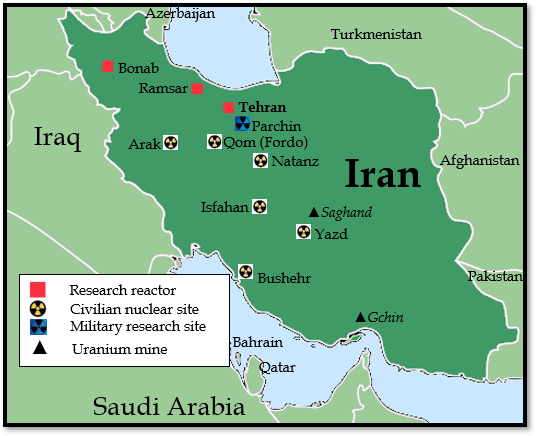
- According to another scientific assessment, the coverage of Iranian EWRs extends from 400-650 km outwards of its borders in selective threatened areas. These areas could be along its western borders with Iraq and towards the Persian Gulf along its SW border.
- According to one open source report some EW resources of Iran could also be in Iraq along with the rocket and missile sites of its proxy ( term loosely used) Popular Mobilisation Force or PMF.
- As to the fire arm, the deployment is likely to be governed by the following:-
- Besides the seat of power, Iran’s most vulnerable assets are its nuclear infrastructure. Some of the key installations likely to be heavily protected by layers of GBAD weapons are:-
- Natanz Centre for Uranium Enrichment. Located well underground, it operates the centrifuges that enrich uranium to weapon grade. Its air defences reportedly took a hit in Apr 2024 Israeli air.
- Isfahan Nuclear Technology Centre – enrichment of radioactive material.
- Saghand- Uranium mining site providing a source of uranium to sustain the country’s nuclear programme.
- Bushehr – already covered. Has a nuclear reactor for civilian use.
- Tehran – a research reactor which besides medical use can also be used for offensive purposes.
- Parchim- probably a site for development and testing of nuclear weapons.
- Karaj – 40 km from Tehran. A probable site for nuclear enrichment
- Other main sites- Ferdow Fuel Enrichment Plant at Qom (160km South of Iran –located inside a mountain and a heavy water reactor located at Arak 240 km west of Tehran .
- While the nuclear sites are priority contenders for GBAD protection, these would have been judiciously allocated based on the location of the facility and its vulnerability from air strikes.
- Other obvious sites for deployment of GBAD weapons would be military complexes, missile production and storage sites and intelligence sites. (Imam Ali Missile Silo Base Khorramabad – storage of ballistic missiles, Missile Development base At Shahid Soltani Garrison NE of Tehran and more.
- Other likely deployment areas could be along air bases and airfields (17 air bases located across different region ). More signicant ones- Shahid VatanPour, Shahrokhi, , Vahdati, Badr Doshan etc.
- Besides the seat of power, Iran’s most vulnerable assets are its nuclear infrastructure. Some of the key installations likely to be heavily protected by layers of GBAD weapons are:-
Air Strikes 26 Oct
Relevant details, though largely known are briefly stated.
A word about the aircraft used for the strike:-
- F35 Lightening II (Adir) stealth air superiority fighters- This multi-role air superiority fighter is a super stealth aircraft. Its RCS is .005 m2. RCS, as stated, is a measure of visibility of an object to radar. Smaller the RCS more difficult will it be for the radars to detect the aircraft. Compare it to F 16 ( 5m2), SU 27 ( 15m2). The first wave of attack led by F 35s that commenced the strike at 0215 h on the night of 25/26 Oct would in all probability have gone totally undetected by the EW sensors of Iran.
- Reportedly, the first wave carried out precise strikes on early warning network, including that of S 300 systems. The claim that it destroyed all of ( four ) S 300 PMU systems appears to be far-fetched ( discussed later)
- The next two waves of wave of attack that followed after about an hour each (3 AM and 4 AM local time) were led by F 15I R’aam ground attack aircrafts and F16I Soufa multirole fighters. These are long rage strike aircrafts with advanced avionics and electronic warfare suit. With the air defence sensors mostly disabled, the strikes reportedly went through unscathed
- Out of various routings available to the strike package the direct over Syria and Iraq was chosen keeping in mind the limitations of air-to-air refuelling resources (further pros and cons of each route not covered). Reports also suggest that early warning air defence resources in Syria and Iraq were also struck in a period of a few days before the night of 25/26 Oct.
- As to the weapons used for the strikes, the mention of the following air launched ballistic missiles have been reported:-
- Rock (Black sparrow missiles) short range missiles (range 320-640 km.)
- Air Laura medium range missiles (range 480-800 km)
- Golden Horizon long range missiles (range 800-1450 km)
- Long range drones RA 01.
- The strikes hit about 20 targets located in the Ilam, Khuzestan and Tehran provinces. The first wave (F-35s) reportedly struck the air defence EW radars. Once these were debilitated, the subsequent waves attacked the targets around Tehran that included the IRGC HQ and Tehran Air Defence HQ, Drone manufacturing facility at Arak, two manufacturing facilities at Khojar and Karaj making solid fuel for ballistic and hypersonic missiles and a rocket storage facility at Shriaj. Drone facility at Arak was attacked using RA01s. These were reportedly engaged by the Bavar system

A Surprise!
With such a substantial air defence capability, a 100+ aircrafts striking in three separate waves and returning to base unscathed is actually a matter of surprise. Here is the sense of the author on some salient points:-
- It is fair to assume that the initial conditions would have been as under:-
- GBAD fire units deployed at identified vulnerable areas/points (VAs/VPs) which included the seat of power, nuclear installations, military establishments, missile factories and drone factories as identified above.
- EW radars deployed at suitable locations especially along the western borders with Iraq/ inside Iraq and on the SW border guarding the sea route.
- Strike aircrafts like Mig 29, SU24s etc., at some state-of-readiness at the air bases.
- That the state-of-readiness was totally ineffective is evident from the fact that the first wave of 25+ F35s simply went undetected. That these were stealth machines and the detection was beyond the EW capability of most of the EWRs is only partially true. There were several EW radars in the Iranian arsenal capable of some degree of detection of stealth targets.
- Firstly all the Four S 300 were not in the show window at Ilam and Khuzestan as stated in some reports. Some of the fire units were reportedly deployed at nuclear facilities at Ferdow and Natanz.
- With the quantum of total EW resources which Iran had, it is simply inconceivable that the same can be obliterated totally by one wave of initial pre-emptive strike; albeit by stealth aircrafts
- What is more probable therefore is that the systems were simply not maintained in the state-of-readiness so as to take an onslaught at 2-4 AM local time (the death-watch hour).
- Another factor is the use of standoff weapons. It is conveniently stated that since Israel used air-launched ballistic missiles it allowed its strike missions to take on targets at Ilam and Khuzestan and even Tehran without entering the Iranian air space thus remaining out of the air defence fire arm. This is also untrue. Following points are stated:-
- Even if the aircrafts remained outside of the Iranian airspace the air defence missile capability of Iran’s air defence extending some 200-300 km outwards was sufficient to fire at the incoming raid.
- Going by the premise that it was simply not possible for Israel to totally wipe off Iran’s EW cover, even if not in the first mission, but for the subsequent two waves, a missile based retaliation was very much as possibility. That it did not happen showed that the ADCRS , was defunct/did not exercise operational control or simply sat out of the battle.
- The fault lines could be anywhere – communications, connectivity, detection, tracking and designation of targets, seamless control of air defence battle besides lack of readiness, lack of training and more. The VSORADS, the SRSAMs, the MRSAMs and the long range air defence and anti-missile weapons simply did not play.
- It is another fact that Iranian air defence per se, has not seen active combat ever since the Iran-Iraq war in the 1980s but that was no reason for an impotent air defence at this critical hour caught in a deep slumber at 2 AM in the night!
What about the Iranian air force scrambling their jets, if not for the first but the subsequent waves? Some thoughts:-
- While it is agreed that the 2nd and third generation machines such as F4 (1958 design) F5 ( late 1950 design) etc. were no match to the F35s or for that matter F 15I and F16Is of Israel, their inventory also had SU 24 interdiction aircrafts and the Mig 29 multirole air superiority fighters of the eighties vintage.
- How come none of these aircrafts were scrambled? Lack of readiness? Lack of training? Lack of integrating the machines in the overall air defence? Only the supreme leader can tell. For lesser professionals, it will defy logic.
Following points are made:-
- It is incorrect to give a clean slate (read such a cake-walk) to the Israelis – kind of ‘they came, they attacked, they went back’ as Iranian air defences merely looked on (sic).
- The fact closer home is that Iran has a substantial GBAD capability and a meagre but operational air force-air defence capability.
- Why the air defences succumbed like non-things, literally sitting out of the battle and overseeing the ruin/ partial destruction of as many as 20 important targets is a matter of deep introspection by the Iranian authorities.
It is rather uncomfortable (read unprofessional) to imagine that based out of strategic compulsions of avoiding a spill over into an all-out West Asia war, Iran deliberately down played the attack (let it happen as a token retaliation for its series of missile attacks in Apr and Oct 24?) and Israel ‘ticking the box’ of measured retaliation carefully avoiding the nuclear sites (US pressure bit notwithstanding) that could stay short of total spill over??
Two persons know the truth, Almighty and the Iranian Supreme leader.
May peace prevail and may air defences of the world play up to their potential in wars of tomorrow.
DISCLAIMER
The paper is author’s individual scholastic articulation and does not necessarily reflect the views of CENJOWS. The author certifies that the article is original in content, unpublished and it has not been submitted for publication/ web upload elsewhere and that the facts and figures quoted are duly referenced, as needed and are believed to be correct.
ENDNOTES
- “Israel strikes military targets in Iran in reprisal that raises risk of regional war,” at www.theguardian.com. Accessed on 07 Nov 2024.
- “The Military Balance 2024,” at www.iiss.org. Accessed on 13 Nov 2024.
- “Iran and Israel : what are their attack and defence capabilities,” at www.aljazeera.com. Accessed on 13 Nov 2024.
- “What are Iran’s air defence capabilities,” at www.m,jpost.com. Accessed on 13 Nov 2024.
- “Assessing Israel’s strikes on Iran, “ at www.csis.org. Accessed on 14 Nov 2024.
- “Bandar-e-Bushehr,” at www.britannica .com. Accessed on 14 Nov 2024.
- Is Israel ready to hit Iran’s nuclear sites, “ at www.dw.com Accessed on 14 Nov 2024.
- “Israel-Iran War : what will be Israel’s’ targets now? ,” at www.indiatoday.in. Accessed on 14 Nov 2024.
- “Radar cross Section,” at www.global security .com . Accessed on 14 Nov 2024.
- “Oct 24 Israel strikes on Iran,” at www.en.m.wikipedia.org. Accessed on 14 Nov 2024.
- “Why Israel ttacked in the death hour, at Youtube Republic world. Accessed on 14 Nov 2024.

Lt Gen (Dr) VK Saxena, PVSM, AVSM, VSM
Lt Gen (Dr) VK Saxena, PVSM, AVSM, VSM is the former Director General Air Defence, Indian Army.

